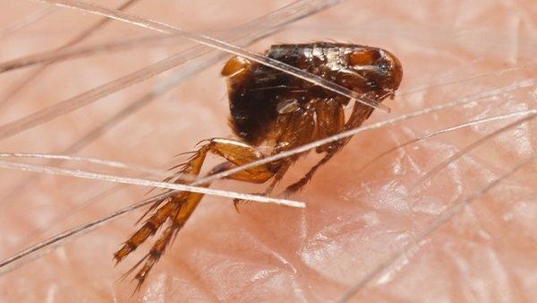Big things come in small packages, and when it comes to sucking blood and spreading disease, fleas, and ticks are pretty much the epitome of that concept. These parasitic insects are a constant threat to property owners around fields and woodland areas and can be introduced in a number of ways. You can take down a wasp’s nest or vacuum a spider web, but locating and eliminating ticks and fleas isn’t always so easy. That’s why you’ve got to know how to keep fleas & ticks away from your Plano property.
What To Know About Fleas & Ticks
Fleas and ticks aren’t close relatives in the insect world, but they do behave in certain similar ways. These pests are often hard to spot without a focused search and prefer to keep a low profile until they can feed on their unsuspecting hosts. Like mosquitoes and bed bugs, both fleas and ticks are parasitic pests that feed on blood for survival. While commonly found on pets and wildlife, they will also feed on humans if given the opportunity.
Ticks are parasitic arachnids related to spiders. There are a number of species in the U.S. that vary in size from 3/16 to 1/8 of an inch in length when unfed. But when ticks start sucking blood, they can easily inflate to 1/2 inch or larger. Ticks are patient parasites that spend their time waiting on the tips of leaves, branches, and low-lying vegetation to latch onto any critter that brushes past them.
Fleas are often thought to be microscopic or invisible, but they can actually be seen with the naked eye. Most fleas are 1/12 to 1/6 of an inch in size and have a reddish color. These pests can travel tremendous distances with their exceptional jumping ability. They can be brought indoors by pets, but are also commonly introduced to the property by local wildlife.
How Dangerous Are Fleas & Ticks?
Like most parasitic insects, fleas and ticks can transmit disease when feeding. While bites can result in nothing more than minor irritation of the skin, a bite from a flea or tick can also result in serious illness. Fleas have been known to cause typhus and tapeworms, and while it seems like something from a history book, fleas are still known to cause bubonic plague. Ticks famously cause Lyme disease, but depending on the species, they can also cause Rocky Mountain spotted fever and tularemia.
Fleas and ticks are excellent hitchhikers and will find their way into your home on your clothing, attached to bags and belongings, or nestled in the fur of your pets. Ticks don’t thrive indoors and widespread infestations don’t typically develop. However, fleas can survive in furniture, carpeting, and blankets where they can breed and feed.
How To Lower The Flea & Tick Population On Your Property
Thankfully, you can reduce the population of fleas and ticks on your Plano property by following a few easy tips:
- Keep wildlife out. Consider installing a fence around the perimeter of your property to repel visiting wildlife that carry fleas and ticks. Remove birdseed and pet food kept outdoors to reduce the presence of hungry critters.
- Check your pets. If you have pets that spend time outdoors, always check their fur for ticks and fleas after they come inside.
- Check yourself. You should check your clothing for hitchhiking fleas and ticks after any hikes, hunting trips, or other outdoor activities to prevent bringing pests home.
If you need advice or assistance dealing with fleas and ticks on your Plano property, contact the experts at All-Safe Pest & Termite. We’re happy to provide pest prevention pointers or to service your property to eliminate troublesome pests. Get in touch with us today.

